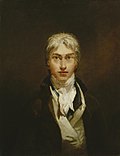Mynd:Rain Steam and Speed the Great Western Railway.jpg

Stærð þessarar forskoðunar: 800 × 597 mynddílar Aðrar upplausnir: 320 × 239 mynddílar | 640 × 478 mynddílar | 1.024 × 764 mynddílar | 1.280 × 956 mynddílar | 2.560 × 1.911 mynddílar | 5.661 × 4.226 mynddílar.
Upphafleg skrá (5.661 × 4.226 mynddílar, skráarstærð: 7,02 MB, MIME-gerð: image/jpeg)
Breytingaskrá skjals
Smelltu á dagsetningu eða tímasetningu til að sjá hvernig hún leit þá út.
| Dagsetning/Tími | Smámynd | Víddir | Notandi | Athugasemd | |
|---|---|---|---|---|---|
| núverandi | 11. janúar 2020 kl. 23:55 |  | 5.661 × 4.226 (7,02 MB) | Mykola Swarnyk | Reverted to version as of 04:12, 29 January 2016 (UTC) |
| 29. janúar 2016 kl. 04:51 |  | 3.567 × 2.648 (1,64 MB) | Jklamo | Reverted to version as of 20:55, 12 April 2012 (UTC) | |
| 29. janúar 2016 kl. 04:12 |  | 5.661 × 4.226 (7,02 MB) | Mykola Swarnyk | Reverted to version as of 02:28, 12 April 2012 (UTC) | |
| 12. apríl 2012 kl. 20:55 |  | 3.567 × 2.648 (1,64 MB) | Jklamo | rv, nice resolution, but different colour rendering | |
| 12. apríl 2012 kl. 02:28 |  | 5.661 × 4.226 (7,02 MB) | Aavindraa | hq | |
| 25. júlí 2006 kl. 02:33 |  | 3.567 × 2.648 (1,64 MB) | Jklamo | J. M. W. Turner - ''Rain, Steam and Speed - The Great Western Railway'' (1844), oil on canvas, National Gallery, London The painting depicts an early locomotive of the Great Western Railway crossing the [[River Th |
Skráartenglar
Eftirfarandi síða notar þessa skrá:
Altæk notkun skráar
Eftirfarandi wikar nota einnig þessa skrá:
- Notkun á ar.wikipedia.org
- Notkun á arz.wikipedia.org
- Notkun á ast.wikipedia.org
- Notkun á azb.wikipedia.org
- Notkun á bo.wikipedia.org
- Notkun á ca.wikipedia.org
- Notkun á cs.wikipedia.org
- Notkun á cv.wikipedia.org
- Notkun á da.wikipedia.org
- Notkun á de.wikipedia.org
- Notkun á el.wikipedia.org
- Notkun á en.wikipedia.org
- River Thames
- Great Western Railway
- Maidenhead
- Maidenhead Railway Bridge
- 1844 in art
- Portal:Trains/Selected picture/2006 archive
- Portal:Trains/Featured picture/Week 46, 2006
- User:Nauticashades
- Collection of the National Gallery, London
- Wikipedia:Featured picture candidates/October-2012
- Wikipedia:Featured picture candidates/Rain, Steam and Speed
- Portal:Trains/Selected picture candidates/Rain Steam and Speed the Great Western Railway.jpg
- Victorian painting
- Resonance (sociology)
- Notkun á en.wikiquote.org
- Notkun á es.wikipedia.org
- Notkun á et.wikipedia.org
- Notkun á eu.wikipedia.org
- Notkun á fa.wikipedia.org
Skoða frekari altæka notkun þessarar skráar.




